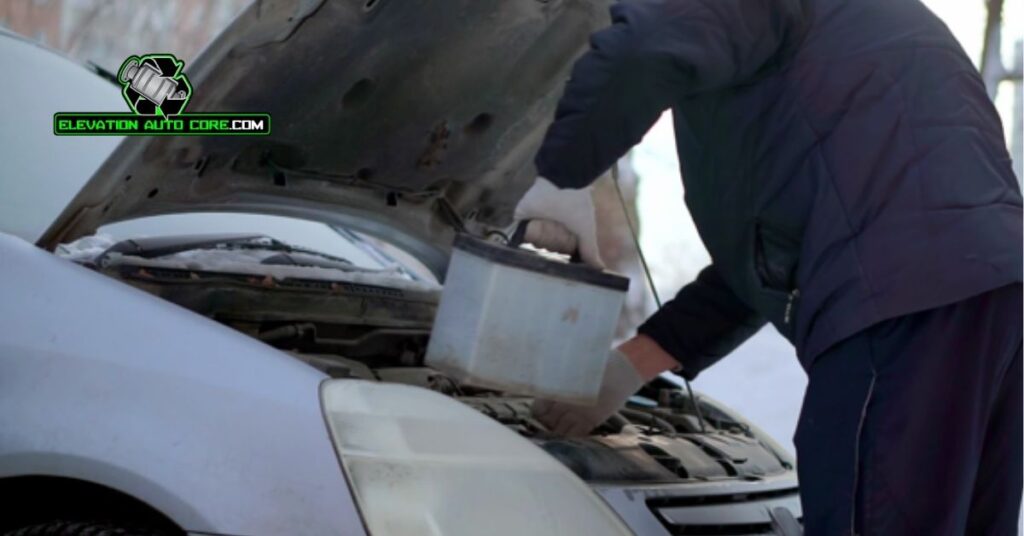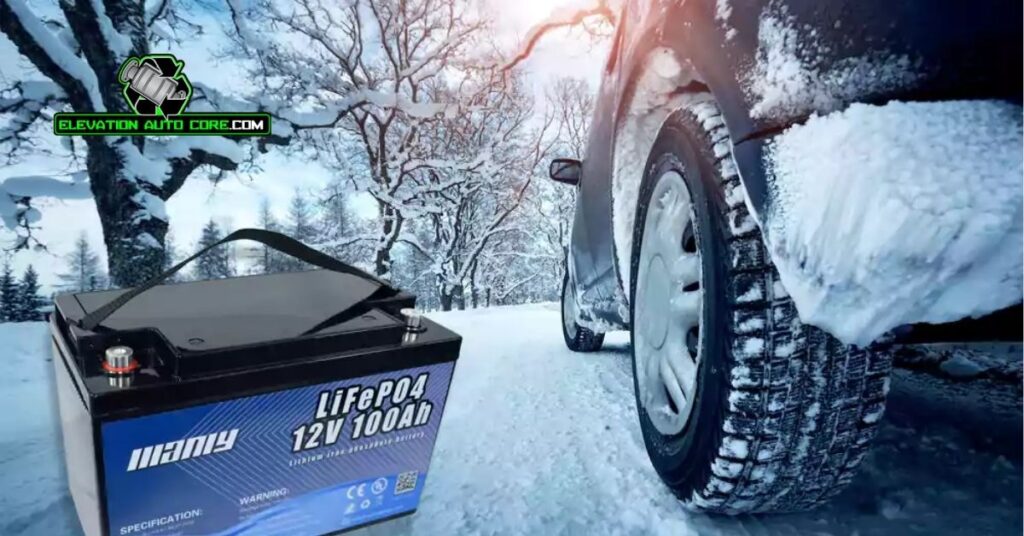How do you keep your car battery from dying in cold weather? Freezing temperatures can wreak havoc on your vehicle, draining your battery when you need it most. Understanding a few simple strategies can save you from the frustration of a dead battery and keep your car running smoothly all winter long. Keep reading to learn how to protect your battery and avoid those chilly morning surprises.
Understanding The Impact Of Cold Weather On Car Batteries

Cold weather significantly lowers your car battery’s efficiency, making it harder to start your car. Freezing temperatures can slow chemical reactions inside the battery, reducing available power.
Why Cold Weather Affects Battery Performance
Extreme temperatures reduce the battery’s ability to provide power. Battery chemistry slows in cold conditions, limiting the energy needed to crank your engine. Oil thickens in the winter, increasing the energy demand on the battery. Older or weaker batteries tend to fail faster because they can’t handle the added strain.
Signs Your Battery May Be Struggling
Dimming headlights are often one of the first indicators. Difficulty in starting your car, especially in the morning, points to reduced battery strength. A clicking noise when turning the key signals your battery may not have enough charge. Electronic issues, such as malfunctioning dashboard lights or power windows, can also suggest trouble.
Preventative Measures To Keep Your Battery Alive

Cold weather strains car batteries, but proactive steps help maintain their performance. Implementing regular checks and cleaning routines ensures your battery stays reliable during freezing temperatures.
Regular Maintenance And Inspections
Schedule periodic battery assessments to detect and resolve potential issues early. Focus on testing the battery’s health to measure its ability to hold a charge, especially before winter begins. Ask a mechanic to examine cables, posts, and connections for signs of wear or damage. Ensure your car’s alternator is functioning correctly, as a weak alternator can prevent the battery from charging fully.
Clean Battery Terminals
Corrosion buildup on battery terminals reduces connectivity, making it harder for the car to start. Wipe away dirt and grease by using a soft brush and a baking soda-water paste. Finish cleaning with a damp cloth to remove residue completely. Apply anti-corrosion spray to keep terminals free of buildup throughout the colder months.
Check Battery Voltage Frequently
Monitor voltage levels with a multimeter to track the battery’s health. A charged car battery should read around 12.6 volts when the engine is off and 13.7-14.7 volts when it’s running. Test more frequently if your battery is older than three years to ensure it meets cold-weather demands. Replace the battery promptly if the voltage measurements drop below recommended levels.
Practical Tips For Protecting Your Battery In Cold Weather

Cold weather can weaken your car battery, but following exact tips can help you avoid unexpected failures and maintain its performance.
Park Your Car In A Garage Or Sheltered Area
Storing your car in a garage keeps it insulated from freezing temperatures. By parking in a shelter, you reduce the effects of extreme cold on your battery’s chemical reactions. If a garage isn’t available, find a spot shielded from wind, such as near a building or fence.
Use A Battery Blanket Or Warmer
A battery blanket maintains a consistent temperature by wrapping around the battery and providing heat. These tools are essential in sub-zero conditions as they prevent the battery from losing its charge capacity. Plugged-in battery warmers are also an effective option when your vehicle is exposed to prolonged cold.
Limit Short Drives
Short trips drain the battery since your alternator may not have enough time to recharge it fully. Combine errands into one longer trip or drive an extra 15–20 minutes over a minimal distance whenever possible. This helps replenish the energy used during ignition and protects the battery from frequent strain caused by repetitive starts.
Choosing The Right Battery For Cold Climates

Selecting a suitable battery customized for cold environments minimizes the risk of failure during freezing temperatures. Cold-exact batteries offer enhanced performance and reliability when standard options struggle.
Features Of Batteries Designed For Cold Weather
Cold weather batteries often include higher cold cranking amps (CCA). The CCA rating measures the battery’s ability to start your car at 0°F; a higher number ensures better performance in low temperatures. For example, a battery with 600 CCA starts more effectively in the cold than one with 300 CCA.
Look for batteries with advanced materials designed to resist freezing. Some feature absorbent glass mat (AGM) technology, which offers better capacity and durability in extreme conditions compared to traditional flooded batteries.
Thicker plates are another key feature. This design allows for better energy storage and slow discharge rates, making it ideal for colder climates. Compatibility with your car’s make and model is also essential, as an incompatible battery may create additional starting or charging issues.
When To Replace Your Battery
Replacing your battery is critical when performance diminishes in cold weather. If your battery is older than three years, frequent voltage checks help identify early signs of wear. Values dropping below 12.4 volts when off indicate potential failure.
Visual inspection reveals key replacement indicators. Corrosion buildup around terminals, leaks, or physical deformities like a swollen case signal the need for a new battery immediately. If your vehicle struggles to start after freezing nights, it’s often a sign the battery can no longer hold a sufficient charge.
Ensure your replacement battery aligns with cold-weather specifications, focusing on a zero-temperature CCA rating and features designed for longevity under harsher conditions.
Conclusion
Keeping your car battery from dying in cold weather requires a proactive approach. By staying on top of maintenance, protecting your battery from freezing temperatures, and making smart choices like using the right battery for winter conditions, you can avoid the hassle of unexpected breakdowns. A little preparation goes a long way in ensuring your car starts reliably, even on the coldest mornings. Take the time to care for your battery now, and you’ll save yourself from unnecessary stress when winter hits.

